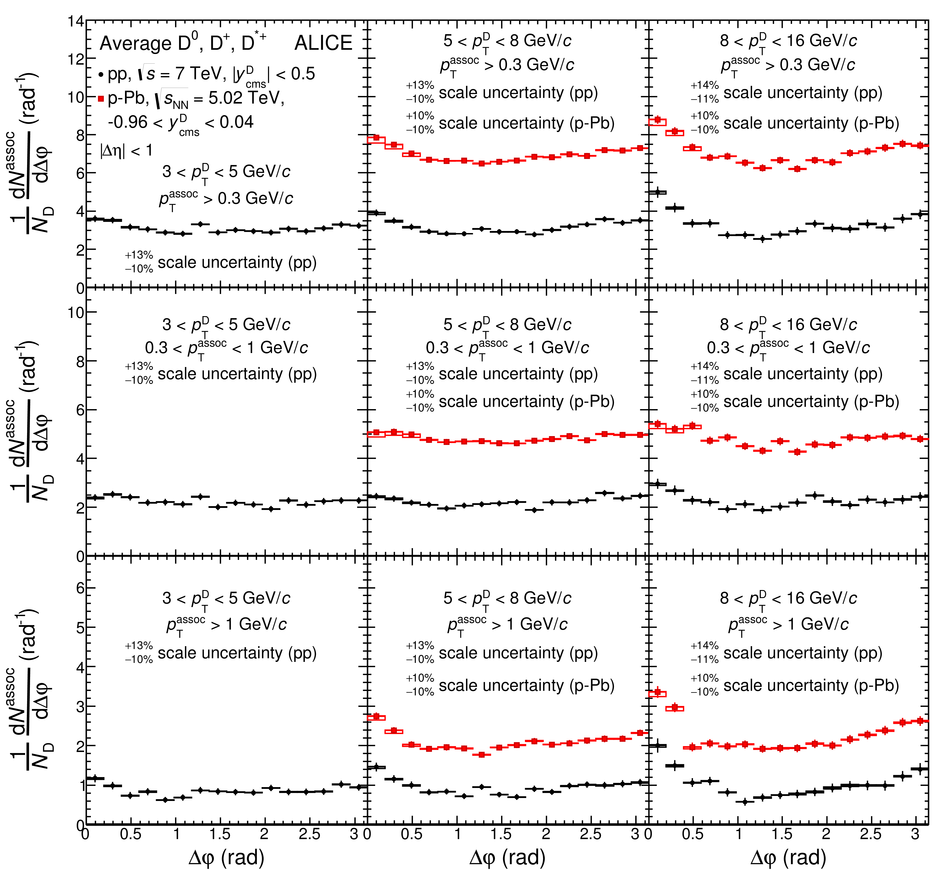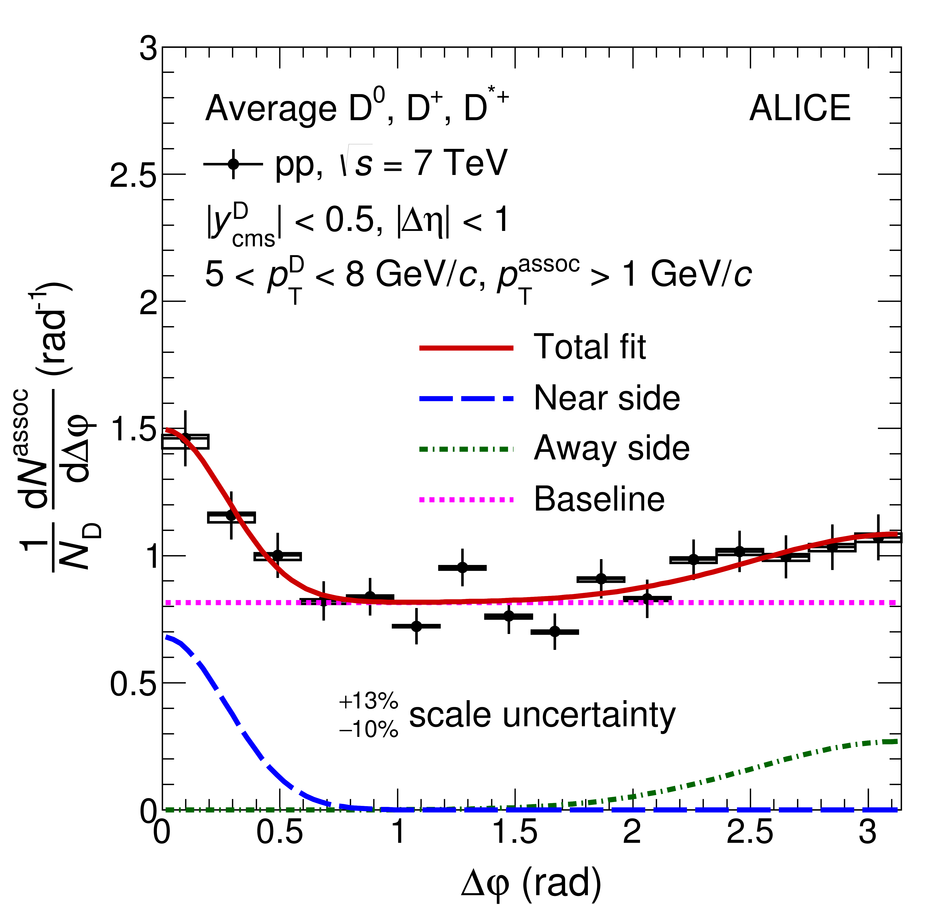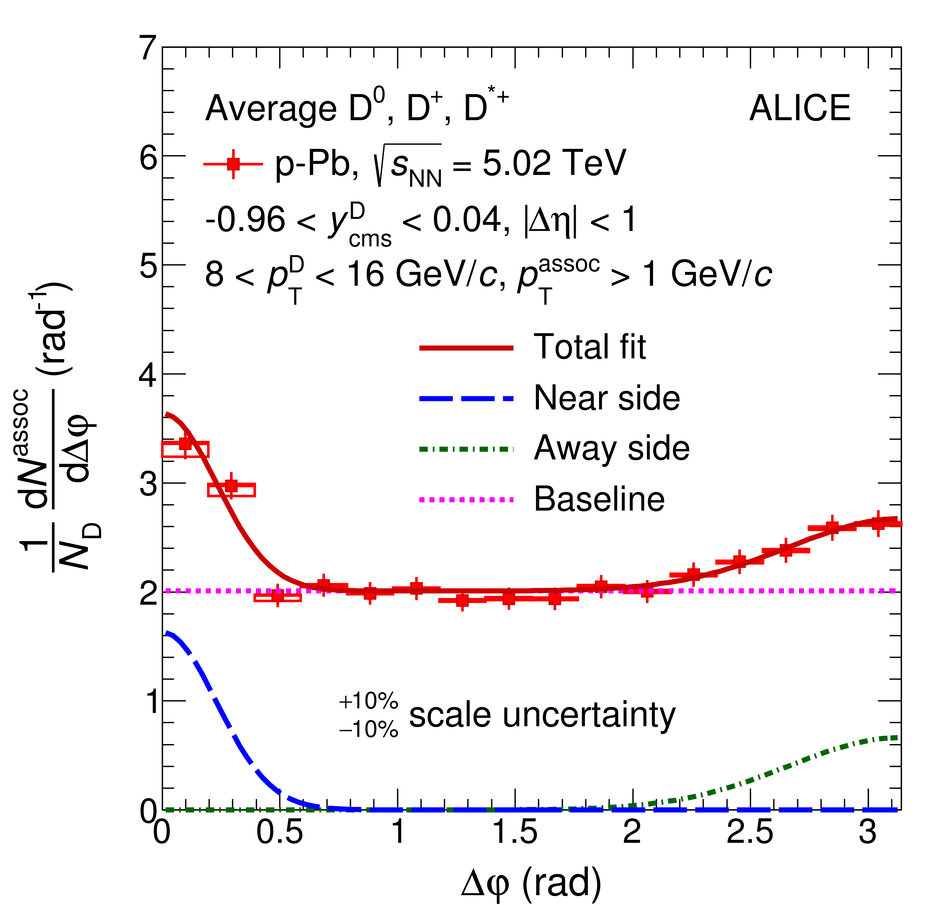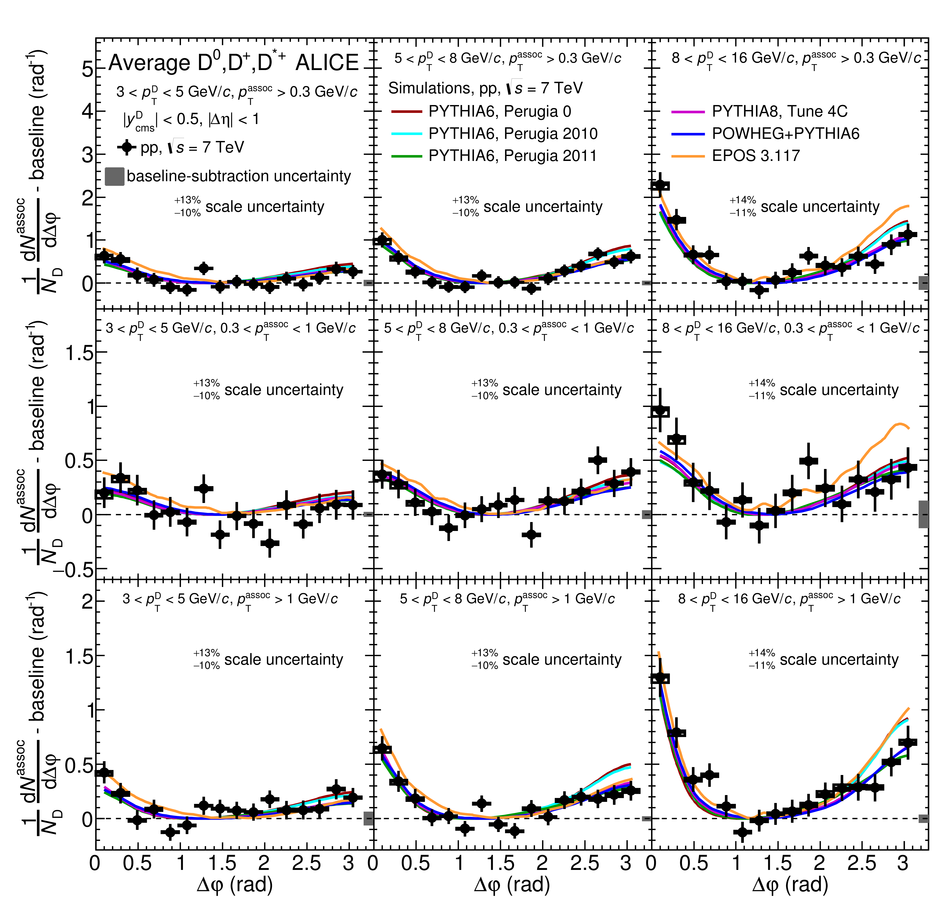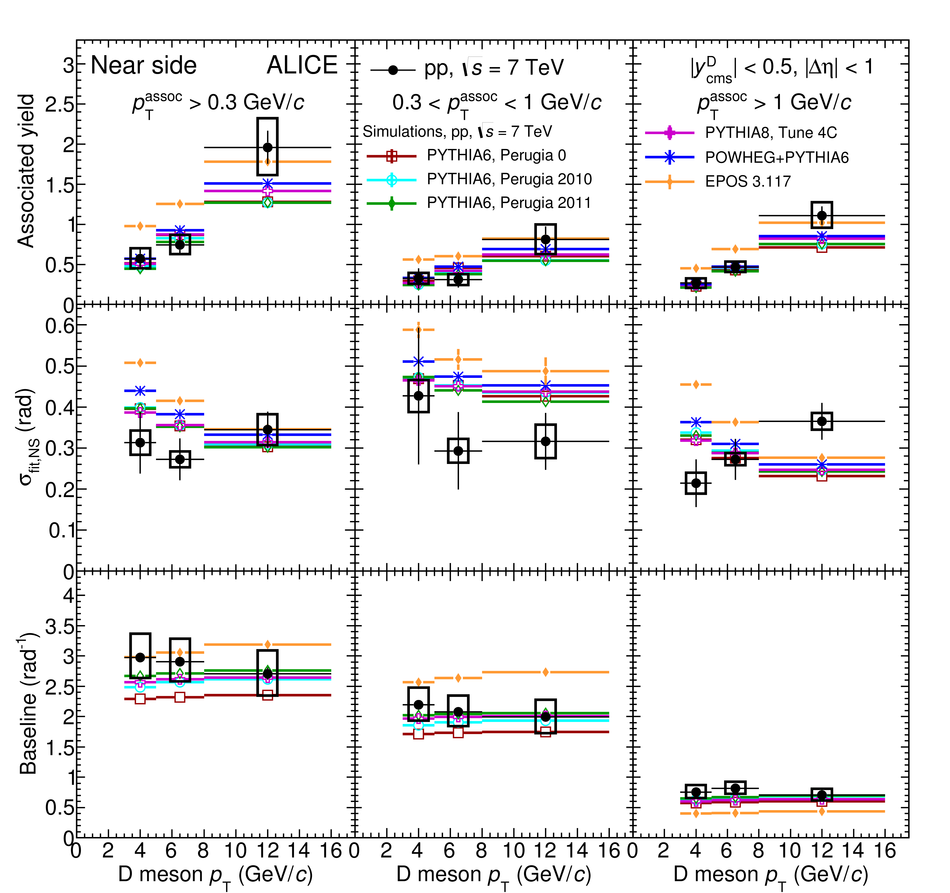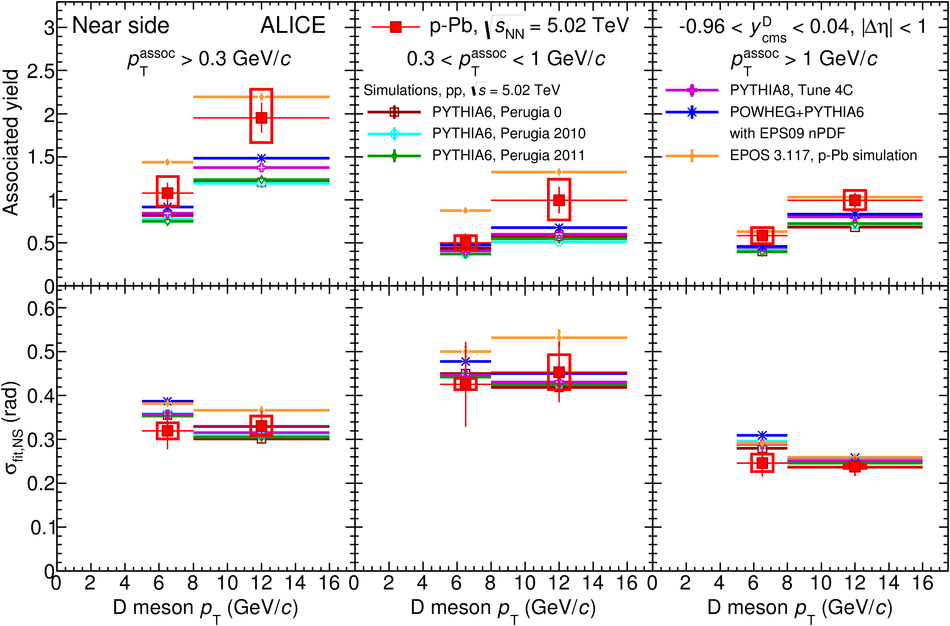The azimuthal correlations of D mesons and charged particles were measured with the ALICE detector in pp collisions at $\sqrt{s}=7$ TeV and p-Pb collisions at $\sqrt{s_{\rm NN}}=5.02$ TeV at the Large Hadron Collider. D$^0$, D$^+$, and D$^{*+}$ mesons and their charge conjugates with transverse momentum $3<~p_{\rm T}<~16$ GeV/$c$ and rapidity in the nucleon-nucleon centre-of-mass system $|y_{\rm cms}|<~0.5$ (pp collisions) and $-0.96<~y_{\rm cms}<~0.04$ (p-Pb collisions) were correlated to charged particles with $p_{\rm T}>0.3$ Gev/$c$. The properties of the correlation peak induced by the jet containing the D meson, described in terms of the yield of charged particles in the peak and peak width, are compatible within uncertainties between the two collision systems, and described by Monte-Carlo simulations based on the PYTHIA, POWHEG and EPOS 3 event generators.
Eur. Phys. J. C 77 (2017) 245
HEP Data
e-Print: arXiv:1605.06963 | PDF | inSPIRE
CERN-EP-2016-129



